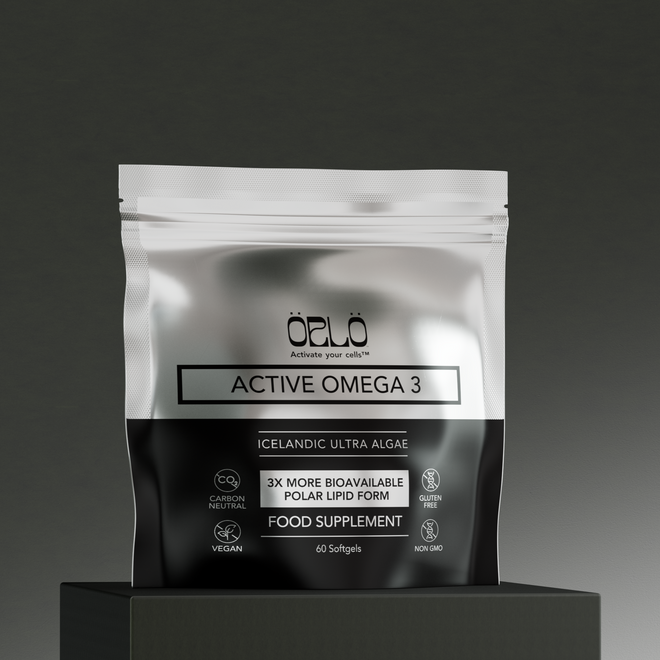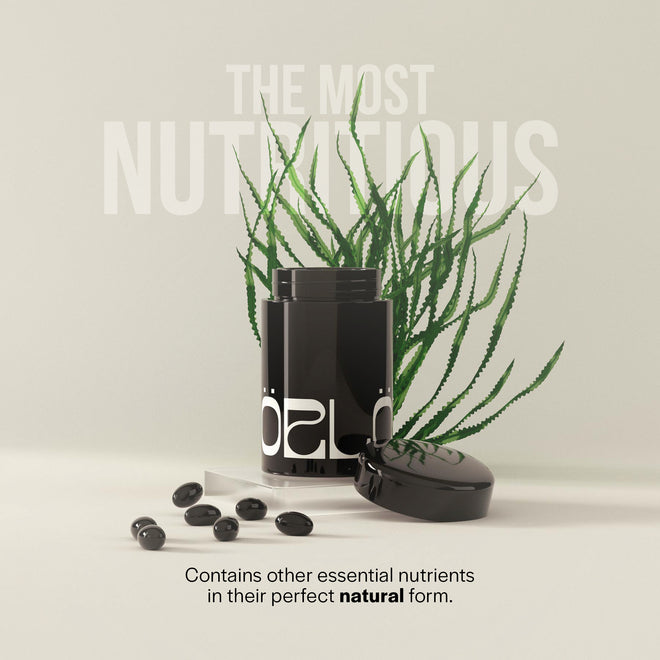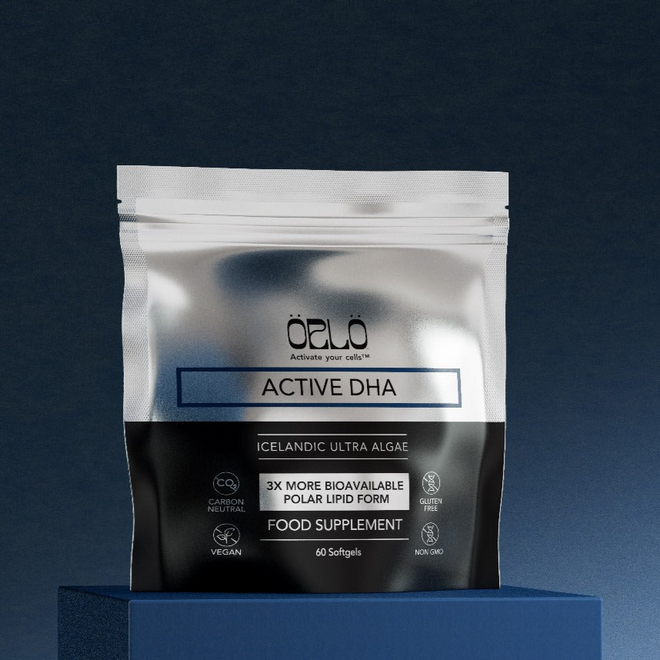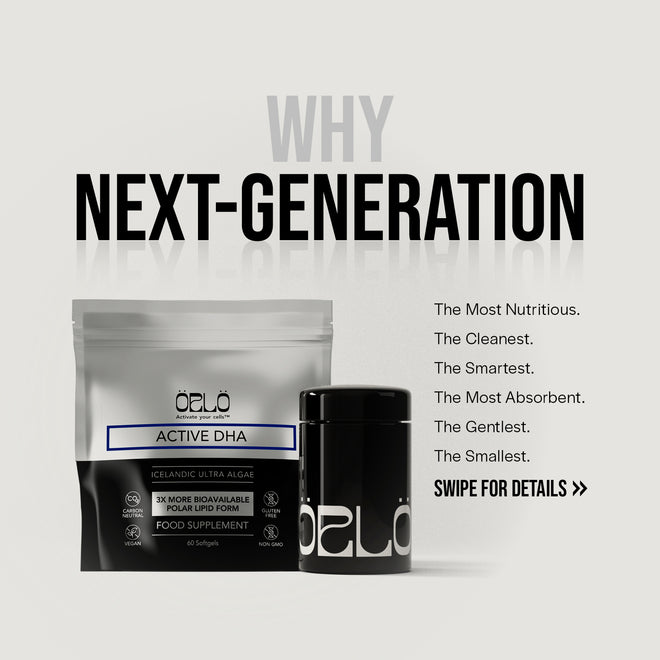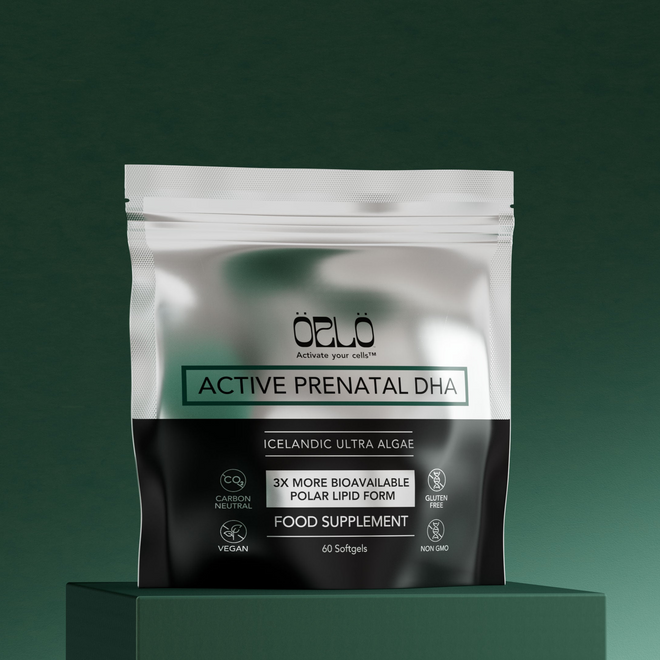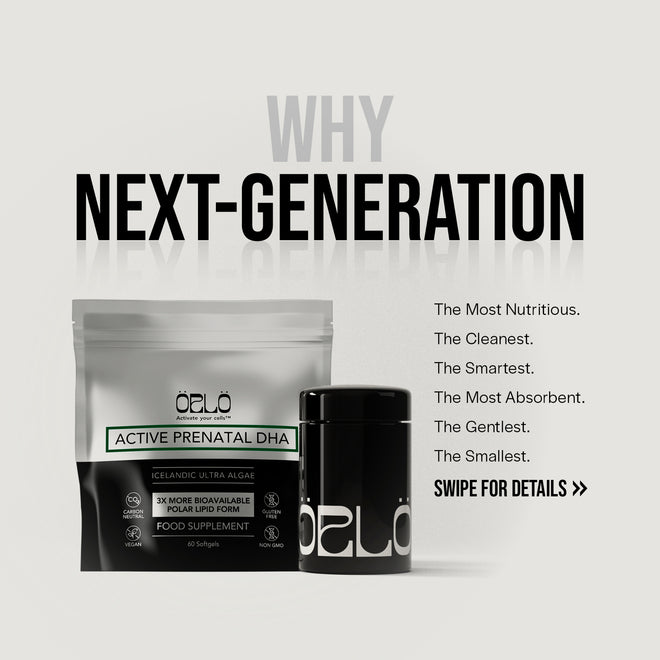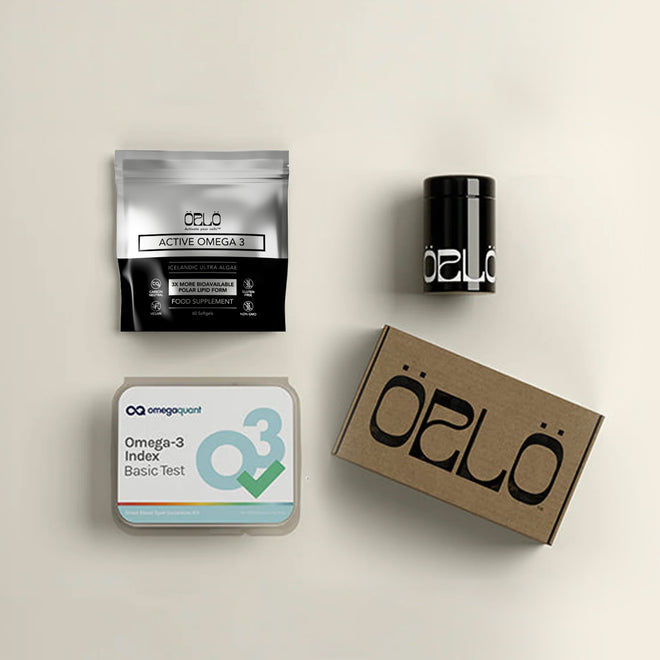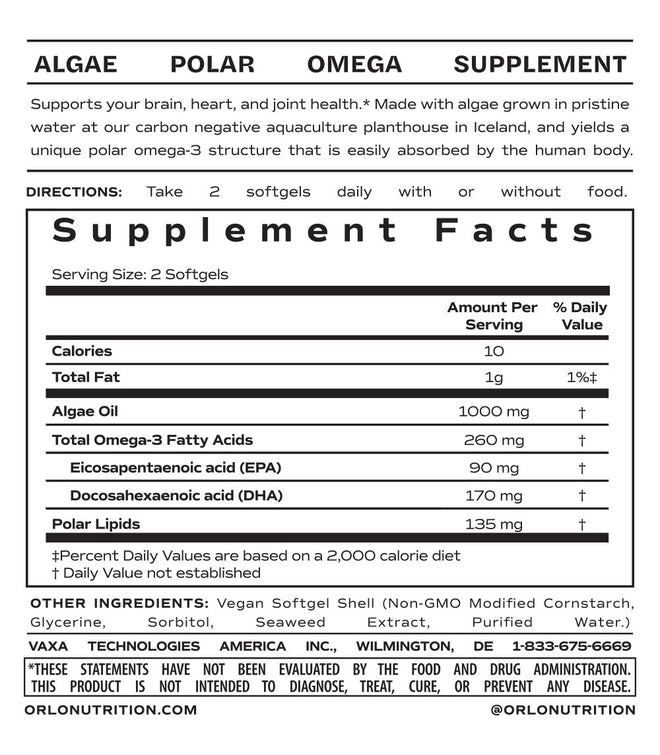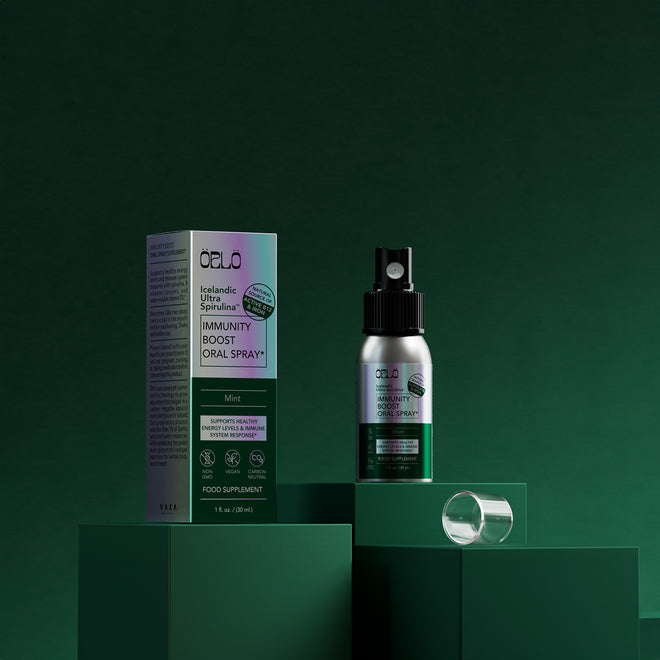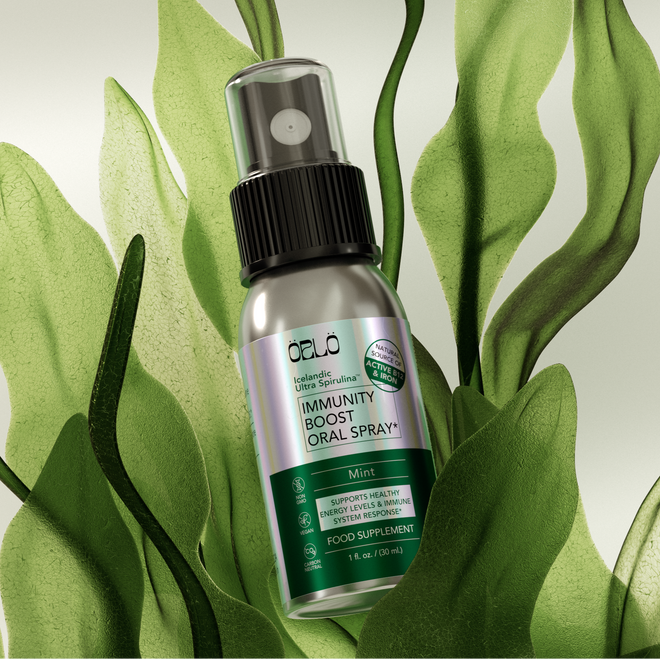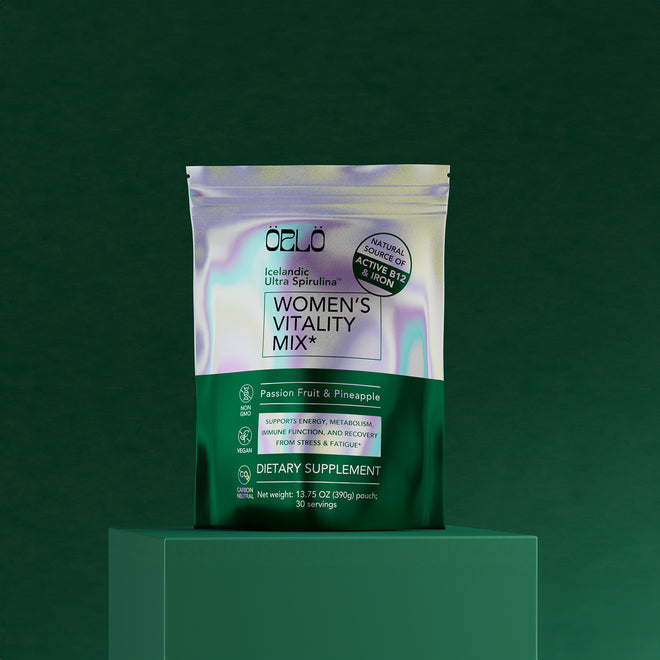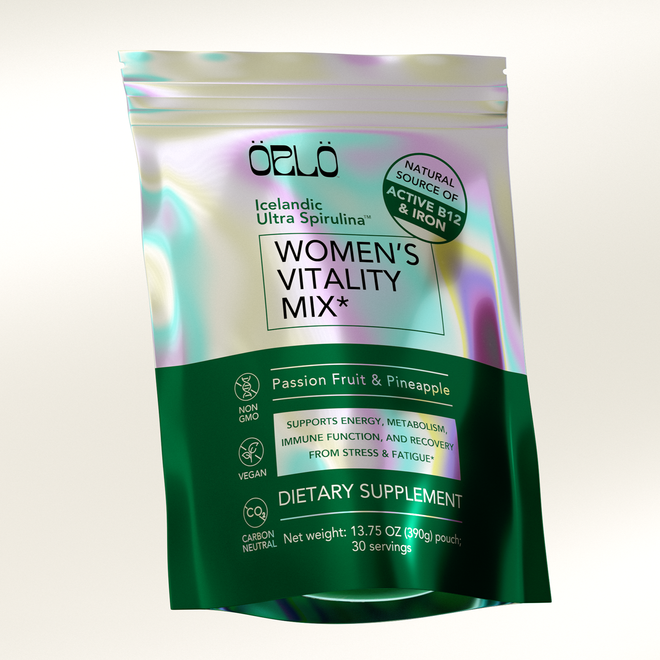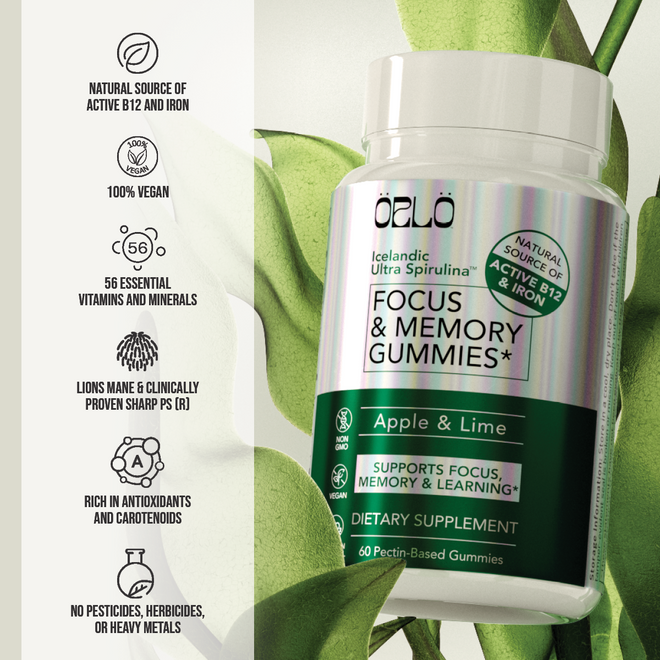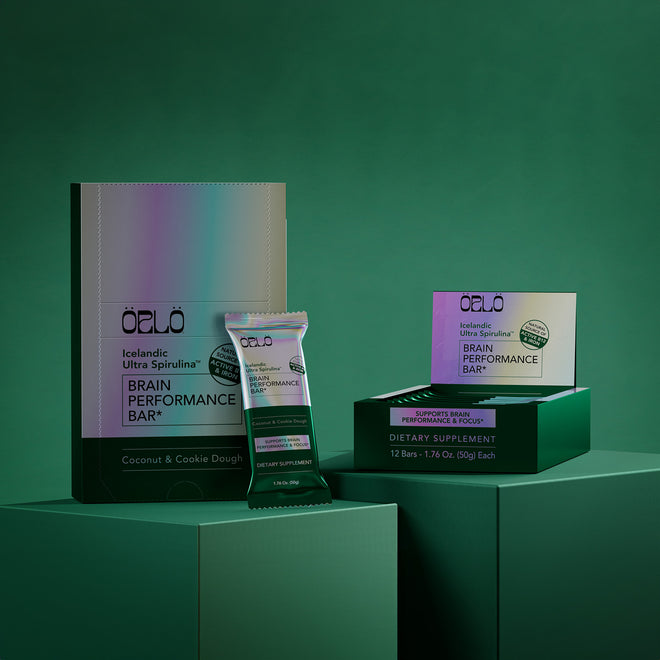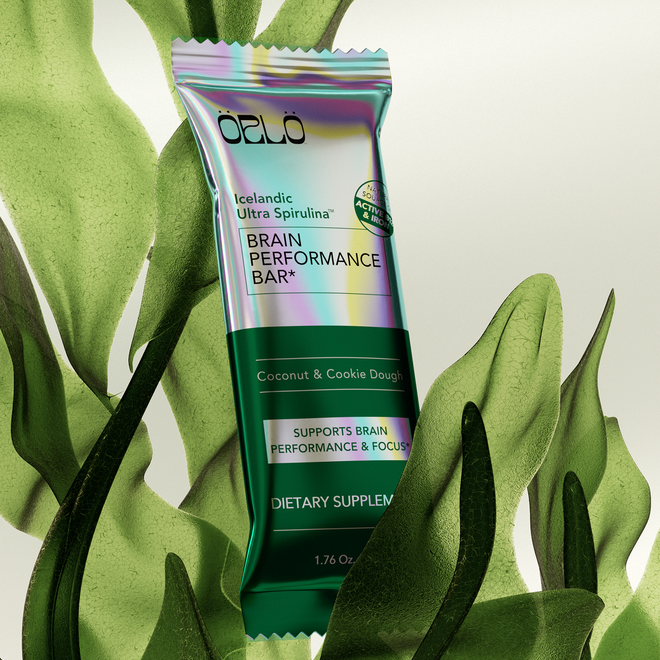Black Friday Exclusive - 30% Off Sitewide | Code: BLACK
Why Fermented Foods Is Good For Your Gut Microbiome With The Ferment Queen, Donna Maltz
Watch the episode here
Instead of jars of sweets and sugar for the holidays, go for jars of fermented vegetables. Not only are they delicious if made right, but they are also very healthy for your gut microbiome. You can make a jar full of sauerkraut and maybe add some juniper berries or cauliflower. You be the judge. Know your body and understand what types of foods work for you. Once you know that, you can basically create anything you want when it comes to fermenting.
Take a deep dive into the world of fermented foods today with Corinna Bellizzi and her guest, the ferment queen, Donna Maltz. Listen in and learn how you can make your gut microbiome as healthy and beautiful as you can.
Key takeaways from this episode:
- How to have a beautiful gut microbiome.
- Why you need to start fermenting your food or buy fermented food.
- How the soil compost plays a big role in fermented food.
- How to make some simple fermented vegetable recipes.
- Go out and get in touch again with nature.
Guest’s Social Links:
Website: https://donnamaltz.com
Photography Art by Donna: https://ecospiredbynature-photography.myshopify.com/
Facebook Group: https://www.facebook.com/groups/liveandworklikethefuturematters
New book - Get Cultured ~ Fermented Vegetables Made Easy: https://www.amazon.com/Cultured-Vegetable-Fermentation-Made-Easy-ebook/dp/B0BG5TM89B/ref=sr_1_1?crid=3117HTIDFSDAK&keywords=fermented+donna+maltz&qid=1668667822&sprefix=fermented+donna+malt%2Caps%2C189&sr=8-1
Corinna's appearance on A Dose of Positivity Podcast: https://anchor.fm/donnamaltz/episodes/A-Dose-of-Positivity-with-Mama-Donna--Corinna-Bellizzi-Great-Nutrition-without-Compromising-Your-Morals-or-Planet-Earth-e1lb3gq
Instagram: https://www.instagram.com/soiltosoulsolutions/
---
Why Fermented Foods Is Good For Your Gut Microbiome With The Ferment Queen, Donna Maltz
We're going to dive deep into the world of fermented foods and how you can create your favorites in your own kitchen. Before we get started with that, I first want to go ahead and talk about a specific question that came in from our community. This is from Kathy, who's a listener of the show. She says, “I have a question regarding the balance of Omega-3 and Omega-6. I recently listened to your question-and-answer podcast, and you talked about having an imbalance of Omega 6 to Omega 3 as something that is related to absorption concerns as well. I didn't follow what you were saying, so I wondered if I could get some clarification. The comment that caught my attention was how eating a peanut butter sandwich would negate the benefits of the chia pudding that you traded yourself to.”
I felt like this bears a little bit more discussion because it's easy for us to get confused when it comes to these things. When you consume a diet that's high in things like peanut oil, even in that peanut butter sandwich, you are consuming a linoleic acid source, which is the platform of Omega 6. This is present in all of your seed oils. It could be your corn oil, your sunflower oil, and it could also be that peanut oil, that legume, so to speak.
Your body competes to break that linoleic acid down into its downstream metabolite or arachidonic acid, which you happen to get a direct source of if you're eating things like animal meats. Omega-3s, on the other side, if you're consuming something like chia seed, which does have a good source of Omega-3s and the alpha-linolenic acid form, that's the upstream version that isn't quite at the EPA and DHA yet that your body might need in order to combat that overconsumption of linoleic acid and arachidonic acid from animal sources.
Even a vegetarian who consumes, let's say, a plant-based diet and quite a bit of Omega-6s from those plant seed oils can fall out of balance because they're getting so much more of the Omega-6 and they don't get as much Omega-3 from that chia seed or that chia pudding and their bodies compete. The enzymes that are used to break down the linoleic acid Omega-6 or the alpha-linolenic acid Omega-3 into the Omega-6 side arachidonic acid.
On the Omega-3 side, EPA and DHA, which you hear about from fish oil and algae oils, to get to these two things, you're using the same enzymes. If you over-consume Omega-6s, you aren't going to get the EPA and DHA that your body needs from that plant-based source because you're in this constant competition. That's why it has been such an amazing tool to have in our toolbox to go to direct sources of EPA and DHA.
Traditionally, you would go to fish oil for that, but the reality is that if you're trying to eat plant-based, you're not going to go to fish oil. You're not going to get that EPA and DHA, so you can go to algae. Technology has come far enough that you can get a good source of direct EPA and DHA from algae. If you're going to Orlo Nutrition, you get that in the polar lipid form, which is even more bioavailable than something that is taken from another source like fish oil.
Ultimately, at the end of the day, you are getting a direct benefit from the Omega-3. You don't have to worry about whether or not your body is competing with the other fats that might be in your diet that is plant-sourced to get the EPA and the DHA. You are able to therefore quash your inflammatory concerns. Your body gets into balance. The Omega-3s help you reach homeostasis so that your body can be its healthiest. I hope that helps clear things up. To Kathy and anyone else reading the show who wants to dive more deeply into this, I welcome future questions. You can always send email notes to Hello@OrloNutrition.com or you can reach out via social channels by messaging us at Orlo Nutrition.
Now let's dive back into the topic as I get ready to introduce you to my friend Donna Maltz. Donna is known as the Ferment Queen and also Mama Donna. She is a Certified Health Coach and has been a professional chef and baker since 1982. She is an inspirational individual. She's a TEDx speaker, and she's a podcaster, too, with her own show titled A Dose of Positivity.
Yours truly was pleased to be a guest on that show. Donna believes that from medicine to meals, from biochar to harvest, there are opportunities and ways to build resilient bodies, souls, communities, and businesses. As she says, “One bite at a time, one choice at a time.” She released her fifth book, which is called Get Cultured! Fermented Vegetables Made Easy.
Donna, Mama Donna, Ferment Queen, welcome to the show.
I feel so zesty. Thank you so much for having me, Corinna.
Perhaps we'll add some zest to people's fermentation diet and teach them how to get there. Would you talk to us for a moment about your specific health journey? I know that part of what led you to want to consume more things like fermented foods is also to manage your own health. Talk to us about that journey.
I also love the person who gave that question at the beginning. That was great, and I encourage everybody to ask questions because that's how we get answers and bring such amazing guests on. You have such an opportunity. That was a great question and a very good scientific answer. I might not be as scientific with this, but you can read the book to get all that information.
My journey started when I came into my mom's womb because that's where the microbes start. It’s in the birth canal. Not all of us are born with as many microbes, nutrient-dense bodies, and the ability to break down foods. We can come into this world allergic to our own mother's milk, for instance, or dairy or whatever have you. Our bodies change like the seasons and the world is changing right now, and there's an opportunity to reinforce that.
My journey, I was born with a healthy gut microbiome and I could eat anything, so much so that I was invincible. I could eat a bag of Tootsie Rolls in one sitting and go and blow Bazooka bubble gum bubbles in a competition with my friends. I became a sugarholic and a foodaholic pretty much when I was young because I thought this is what you do back in the ‘60s and the ‘70s. We had no idea the industrial food complex was infiltrating our minds, our bodies, and our souls. My father was a dentist and he warned me. He said, “Donna, you got to stop the sugar,” and he was right. I’ll give you a big smile. My teeth got wrecked and this is where the digestion starts, in our mouths.
The industrial food complex is infiltrating your minds, bodies, and souls.
When I was 25, I went from being an organic farmer and studying diet nutrition all through college, cleaned up my diet, and became a super health freak. I started a restaurant, a bakery and a cafe in Alaska, the first natural foods organic bakery cafe in the state of Alaska in 1982. I had those cravings for those brownies, but I made them organic. Those cravings were apple crisps, but they were organic.
I was eating too many carbohydrates with beans, rice, and sourdough bread. The name of our restaurant and our bakery was called The Fresh Sourdough Express, and we specialized in sourdough bread, which is another fermentation process, which is a book have to write one of these days. Sourdough bread is much better for you because it makes the grain more bioavailable to you.
It breaks down the gluten too. Even some people who are a little gluten sensitive will do fine on good sourdough bread. Isn't that right?
For most, not everybody.
If you're Celiac, that's a different realm, right?
Absolutely. Also, depending if you're using fresh ground flour and you're getting organic grains, especially if you can get heirloom grains. The closer to the source, to the soil of the grain, the more digestible it is. We'll get into that in a minute. I was closing your first question. We went off on several tangents. We could talk about a lot of microbes. We're going to focus on fermented vegetables, but The Sourdough Express, we made our own sauerkrauts and our own fermented foods there too.
I ruined that beautiful gift that my mother gave me of having the right number of mitochondria and microbes, the good and healthy bad bacteria because you need that 80/20 rule to keep up your immune system. I had that perfect balance and I got to 50/50 and then I got to 40/60 and then 30/60, and then I got fat, sick, and nearly dead when I was in my early 40s.
I got up to 205 pounds at 5’2.5”. I got diagnosed with arthritis and irritated bowel syndrome. I was a workaholic. I seemed to have a memory lapse of everything that I had learned being an organic farmer, everything that I had learned, getting to be a certified health coach. I went blank for a while. It started with an injury and then not being able to exercise.
I got back into fermented foods and that was the key to my weight loss. That was the key to restoring my gut microbiome. It was the key to restoring my mood and my self-esteem. This was in about 2001 or 2002 when I got into it. I read Donna Gates's book, The Body Ecology Diet, which is another excellent book on fermentation food and a good, well-rounded diet.
I’m not a proponent of one diet over another because it gets back to fermented foods. It makes everything more bioavailable to you. What's good for you might not be good for me. Whether you're a carnivore diet, a paleo, keto, vegan, vegetarian, or whatever diet, we need to understand test, don't guess. Find out where your body's at.
I want to say one thing that's so important here, and then you can pop on because, at the very beginning, full disclosure, not everybody can eat fermented foods. Not everybody can eat especially these Lacto-bacterial fermented vegetable foods because they are high in histamines and you know how you take antihistamines. Some people are histamine intolerant and a lot of them are migraine sufferers. I want everybody to read this. It's also in my book. I talk about histamines and it's very rare, but like Celiac disease is very rare. You can't grain, but it's something to be aware of.
It could be something that could totally change your life, eliminating one food or another. I know that you talk about all these great things on your show about that. I wanted to, in a full circle, say I found what was perfect for me and it was that fermented vegetables that ignited the compost in my belly that fired up my digestion again and enabled me to lose the weight and feel better about myself and everything.
As we talk about our gut microbiome, it's important that we mention, at least for people, that the foods that you eat will dictate what types of microorganisms you have in your gut. Sometimes we'll get things like an infection that we might have to address with an antibiotic, for instance. We take that antibiotic and it can kill off a lot of the good bacteria area as well along with the bad. We then need to work at reseeding the environment.
A couple of products and tools that I’ve gone to over the years when I’ve had to have a course of antibiotics are some over-the-counter supplements that contain a broad spectrum of different probiotics in particular. One I’m thinking of is Healthy Trinity by Natren. It's shelf stable, but often in the refrigerated section to preserve that product or something like Bio-K, which is like a yogurt format with a very high potency of different probiotics. They have both vegetarian sources from soy or from rice, and then also some that are in a medium of dairy. You can choose multiple different paths.
These can help reseed your gut, but then you have to add back healthy food. The healthy food you consume will dictate the probiotics that you have in your gut. If you eat a lot of vegetables, you're going to have probiotics that are in your system that help you digest the vegetables. If you eat a lot of meat, you're going to have probiotics in your system that are going to help you digest the meat.
Every system becomes tailor-made to the individual that's consuming it. There's even now some research where they're doing transplants of people's fecal matter into the gut of an individual to help reseed that environment. What would be helpful for me as we open this conversation is to hear from you which particular vegetables you're working to ferment, how you see them as laying into helping to create this healthy microflora, and the probiotics that are in our gut that help us digest our foods.
You can make your own probiotics that are 10 to 100 times more effective than something that you buy that's been processed and packaged, shelf-stable especially. Even in the refrigerator, it's very easy. We've gotten lazy as a society and therefore, you can take that same metaphor to your own digestive system. Our digestive systems have gotten lazy.
This is important. You were talking about which vegetables to eat. Especially cabbage. What is cabbage? It's an enzyme, specifically cabbage, and this is how people got through the famine too. It supports your gut and helps even repair ulcers. Cabbage sauerkraut is very popular and probably, to me, one of the best tastings.
I ferment everything. I ferment green tomatoes. I ferment daikon radishes. It’s one of my favorites. Daikon radishes are so nutrient-dense and they've got that bitter to them, which is one of those taste buds that we have a hard time getting. When you ferment them, they're crunchy or crunchier than a pickle. They're delicious.
When you ferment a vegetable, whether it's a carrot, a daikon, or a green tomato, it is going to concentrate, making everything way more bio-available in nutrients rather than eating it raw. It amplifies it. It's the transformative action of microorganisms that turn that sugar into this carbohydrate that becomes readily available to those beautiful gut microbiomes that need that attention.
You're speaking about a topic we often cover on this show, which is bioavailability. When you speak to something like supplements, I know you mentioned you don't personally take something like the Bio-Ks, for example. I want to be clear. Bio-K is like kefir. It's a yogurt product, so it's in the refrigerator and it's hyper-concentrated in the level of the active probiotics present within it. We don't have any financial ties to Bio-K. I like their product.
One of the things that I have a hard time with is that people will say, “I took this course of antibiotics. I’m going to go get some yogurt at the store,” and they'll pick up the Dannon, which isn't even yogurt. It doesn't have the live bacteria in it that will help to reseed your gut. If you've had a course of antibiotics and you think you're doing good by going to buy some yogurt, that may not be the best path. It may be better to go ahead into your cabinet to pull out some sauerkraut that you made from the recipes in your book. I wanted to talk for a moment about how simple it is to make some of these recipes. Perhaps you could even walk us through what it takes to create a sauerkraut.
I’m going to give you a great analogy and I want everybody to sit back and take this in. I’m sure some of you know because you're reading the show and you know Corinna and the Care More Be Better Show and the type of people she interviews from the soil to the soul. Think of how compost works. If you take care of compost, it's the combination of what we put into the fermentation process that makes it easy. I know this is going to sound off track, but I want to cover this because this is important to your question. I’m trying to tie this together, so everybody gets it, but maybe it's because this is so important. I got to get this out before I answer that question.
I want everybody to think about their guts right now in relation to compost. You'll see this if you watch the video that I’m providing for everybody who watches a show, you make compost and you have these raw vegetables. If you're going to make sauerkraut in your kitchen, you got all this cabbage. You've got this raw stuff and you start composting the composting process. If you have good active compost, you are going to be able to turn that into compost very easily, rich, beautiful loamy soil.
If you have the right ingredients, the right temperature, and the right mixture of NPK, nitrogen, phosphate, and potassium to break down your compost, most people, their digestion, if you look at compost, you'll see egg shells and all whatever is that you have. That's a lot of people's digestion. It stops right there. It's constipating and it's painful. You look at it, and it's more broken down.
Maybe the average person is thinking that they're doing okay. They're going to the bathroom maybe once a day, maybe every other day. Look at that compost. It's slow and stagnant. It needs to be turned. It needs maybe some more carbon. It needs the right chemistry to break it down, but it's better than the first pile, which is like crap.
You then go all the way to the end and you have all the right ingredients and you have the right timing, the right temperature, and you've turned the soil and you get this beautiful, rich, loamy, microbiome-rich compost in a very short time because you did it right and you had the right combination. It's quick. People think, “It's compost. It is so easy,” but that's a whole other topic for another day. People lose sight of the connection between our microbiome to the connection of how we're treating the earth and the soil.
A lot of people lose sight of the connection of their microbiome to how they treat the earth and the soil.
The microbiome is essentially related to soil because our food comes from the soil and the food that is grown using the nutrients that exist in the soil because there's a biome there too. Some residuals from that soil even get onto the vegetable matter, which sometimes you also ingest. This can be a problem for people if it's bad bacteria. That’s when you’ll have recalls suddenly of romaine lettuce because it was infiltrated with some bacteria that make people very sick.
However, there are also healthy bacteria in there too. It's not like you can go directly to the soil and eat soil, though many of us as children might have done that. Perhaps it did help to create a nice microbiome too. We do need to get back to this consistent good source of food and the foods that we give our bodies, and they contain the prebiotics that will help to seed the gut in an ongoing way.
If we are consuming food that is irritating to our microbiome, if we're consuming way too much sugar, for instance, you mentioned yeast, you can have a yeast overgrowth or a yeast bloom. That's where you might hear about things like candida overgrowth. You get a yeast infection in women. Men can also suffer from situations like that. You can have it appear in your mouth as thrush, white spots, or sores on the tongue, things along these lines.
This is all indicative of our systems falling out of whack. By addressing our diet, by incorporating things like fermented foods, which provide a great source of nutrition in a more bioavailable form so that we can build that healthy gut. We're talking about poop here so that our bowel movements are regular so that we can see in our stool that our food has been digested. It's not overly fibrous or not seeing bits of things that perhaps you don't want to see there. We can get to a space where our gut is as healthy as that rich loamy soil that you mentioned when you're making great compost.
The tie-in is so important to the gut microbiome. Our guts are our second brain. The compost, thinking about composting, what doesn't serve you, and nurturing what does. When you take that metaphor and you bring that into the kitchen and you look at what's in your refrigerator, there's room for a jar of sauerkraut. There's room for some fermented green tomatoes because you went to the farmer's market and they had them a good deal on cucumbers or whatever to make pickles, or you're growing it in your very own garden or rooftop garden in your apartment building. It can be that easy.

It's like prioritizing. What are we prioritizing in our lives? We're making all this money so we can go out and buy expensive products to help make us feel better or we can work on making things that are super simple that you can do for an hour on a Sunday afternoon once a month. You get to go to the farmer's market, or you get to go to the grocery store. You get to get your kids and go, “Guess what we're doing? We’re making pickles.”
I don't know many kids that don't like pickles. They get a hand in it and they make the pickles or they have the sauerkraut on their organic free-range hot dog or their tofu hot dog or whatever people are eating these days. Anything that they're eating, if they're eating with fermented pickles, not vinegar shelf-stable pickles, not shelf-stable sauerkraut. I’m talking about the rich, zesty microbiome, rich fermented foods that took you an hour to make. It's going to make everything more bioavailable to your children, your family, and your friends.
All you need is a tablespoon of this to get the benefits. One tablespoon of sauerkraut or one small little pickle is going to fire up that free-range local organic steak you had or your vegan, vegetarian meal. It is going to make all the difference in the world. You're going to feel better. Your skin's going to clear up. When you are eating fermented foods, you are getting Vitamin K, Vitamin D, zinc, and all these trace minerals, many of which you can't find in eating a regular vegetable or you're getting it in a much more concentrated form.
You mentioned Vitamin K right there. I want to pause for a moment and talk about that because one of the most popular fermented foods in Japan is natto. I personally do not like the taste of natto. It is not something that likes to pass these lips, but for those people who are into it, you can get natto sushi rolls at certain Japanese or Korean-Japanese restaurants and consume it in its raw form. You can also get extracts of natto that are Vitamin K2, which are highly absorbable in your system, and do some vital things.
When you get enough Vitamin K2 in your system, a couple of things happen. They act like traffic cops in your body. They essentially reside in your soft tissue and they tell calcium not to go there like, “Don't go into my soft tissues. Don't clog up my arteries. Go to my bones and teeth. Build healthy, strong bones.” If you're consuming a Vitamin D supplement every day and you're consuming more than the general 1,000 IU of Vitamin D, you should probably make sure that your multivitamin or that you're eating more fermented foods.
They also happen to have Vitamin K2 in them. You're augmenting that system so that your calcium goes where it's needed and not where it's not. You can build healthy bones and teeth, keep your joints clear, and ensure you've got good joint comfort and good cardiovascular health. This has been part of the missing equation and the whole bone health conversation where we say, “We're going to take calcium and Vitamin D for bone health.” When women do that, we don't have a reduced risk for fractures, as current science would be showing us. It could also be because they're not consuming enough of Vitamin K2.
If we get these things in balance, we can do it from our diet. We have to be mindful of things like cruciferous vegetables that are high in calcium. They also have inboard Vitamin K1, which is less bioavailable, but it's very present. If you're going to foods for nutrition, you're going to nutrient-dense foods. You're going to often get these co-partner nutrients that are required by your system to be as healthiest.
I am allergic to broccoli, so I can't go to broccoli for my calcium. However, I can go to things like kale and other cruciferous just fine. It’s interesting. Everyone's different. Get to know your body. Listen to it. When you eat something, does it feel good? Hopefully, you don't have a histamine reaction to those pickles and you can dive deep into the world of fermented foods.
I want to say that one of my favorite things to ferment is broccoli and cauliflower. You put in some red peppers and green peppers. You can't believe what an amazing, beautiful holiday gift it makes when you take the time to make a few extra jars and you've got white cauliflower, green broccoli, and red peppers in the jar. You're fermenting that and you're bringing that to a holiday party.
It is so simple and you're getting all that Vitamin K for yourself and you're sharing that and this information as well. It's such a great holiday idea. People are doing jams and jellies with lots of sugar. Why not take those same jars and fill them with this rich probiotic nutrient-dense food that's going to help heal somebody's gut and make them feel better? What a great idea.
In the holidays, instead of doing jars of jams and jellies, why not jars of rich probiotic nutrient-dense food?
I’ve touched on this a couple of times and because you've mentioned all these fabulous recipes you can make in an hour or less, walk us through that. How do you prepare, let's say, a simple sauerkraut?
This is an interesting thing about cabbage. In the summer, the heads are looser, and in the winter, cabbage is denser because they're colder and the recipe can vary. As with any recipe and one avocado, some of my avocados are this big and I’m not kidding, you have this tree that gives these huge avocados. You're going to realize that any recipe that you follow, especially using natural ingredients, it's going to vary a little bit.
Usually, what I do is I’ll take 2 to 3 heads of cabbage, depending on how dense they are if it's a winter or summer cabbage. Cut them thin. You take it and you massage it. You put in a big huge bowl and you're adding two of each head of cabbage, about 1 to 2 tablespoons of cabbage, again depending on how big or how dense the cabbage is. Better to add less salt at first because you can always add more salt. You can add more cabbage if you only have 2 or 3 heads of cabbage. Go easy on the salt at first. Follow the directions in the book, or you can google it or watch a YouTube video too. You cut it thin, put it in a jar, and for about 8 to 10 minutes, you are getting a workout on your fingers. I love caraway. I love fennel.
Break this down for me as somebody who has not done this myself. You're massaging the cabbage that you've sliced up, much like what you would see in a jar of cabbage. It's much more coarse at this point. You're massaging it with pickling salts, correct?
No, not pickling salts. You want to get salt. Salt is so important. We die without salt. We die with too much salt. Our blood pressure goes off the chart. Salt is huge and it is the main ingredient other than the vegetable that you're fermenting with salt. Get the highest quality salt. Go out and knock yourself out and spend an extra 50% more. Never use iodized salt ever in your life. Go ahead and get some beautiful Himalayan salt. Go to the health food store. Any health food store is going to have high-quality salt. Each of the salts has different minerals because they come from different places in the world. I have black salt. I have pink Himalayan salt.
I happen to live in Hawaii. We go and we harvest the salt from the rocks here. This salt is so concentrated. Getting back to a simple recipe, some salt, just like some wines, have a higher content of alcohol in them. I have to use less salt when I use Hawaiian salt or this rich Himalayan salt that I have versus a white crystallized salt. You want to taste it. Salt is a key ingredient. It’s super simple. Either 1 or 1.5 tablespoons to a head of cabbage. Throw that high-quality nutrient-dense salt, and all those minerals will, again, become more bioavailable to you in the fermentation process. You're getting the benefits of the nutrients and the trace minerals and the salt in addition to the great benefits of the sauerkraut.
Are you adding water at that stage?
No. Never add water to sauerkraut.
I didn't know. You're just massaging the cabbage with salt.
Just imagine you're getting massaged by a fabulous masseuse who understands the lymphatic systems. It's pulling out and drawing out. That water isn't bad limp. You're drawing it out.
The salts itself extracts the water from the cabbage and you keep that water as your pickling juice, so to speak. It probably settles within the bowl or the jar that you're massaging it in, correct?
The first time you do it, the first 3 or 4 minutes you're going, “This woman's crazy. She can't be doing this.” You get this little pool of water and then all of a sudden, all the cells in the cabbage start to break down all at once. It's like the compost heat theory. It's all fired up. The bowl of cabbage goes from this to this. It's like, “She said three heads of cabbage. What is she talking about? It's going to take up this,” and it does. It's very big in your bowl, but by the time you're done with it, depending on the type of bowl you're using, you're going to have enough juice and no water to add to your jar. Here's something that I wanted to mention. I was getting back to caraway seeds and fennel seeds.
They have the flavor, right?
Not only do they have the flavor, and the nutrients that are in these underutilized seeds, like you might have a little cumin seed with my Mexican food, but these are also power seeds. These seeds are full of digestive enzymes. They're full of minerals and flavor. We're maybe used to maybe the flavor a little bit of flavor like coriander, which is cilantro. The coriander seed in a sauerkraut or one of the fermented foods, you are not only getting the flavor, but you're getting these seeds.
Think of a seed bursting out of the ground, out of the earth. When you take a seed and you put it in your ferments, it's bursting the nutrients from that seed in there, and again, making those nutrients in the salt and the seed and the cabbage more nutrient dense. I look at it as medicine. I’ll throw in fresh turmeric. I’ll throw in fresh ginger in my sauerkraut. I’ll throw in some garlic. If I get a lot of garlic, it'll be like a garlickraut.
When you're looking at something like the cauliflower, garlic, or red pepper purchased off the store shelf, you can make this at home, but I imagine that you're not sitting there and massaging the cauliflower to break it down to get the moisture out of it. How do you approach this differently than you would the cabbage deep massage?
That's what's so cool about this. You bake a biscotti one way, a sourdough bread another way, and a cobbler another way. There are certain recipes. They have similar transformative actions because we're using similar things, but they're very different. The sauerkraut recipe is very different. I want to take one step backward on that sauerkraut recipe. You can do your own thing. You're like an artist in the kitchen.
The kitchen is the altar of your home. The fermentation vegetables are like the preacher in the room because they express themselves. If you're making big batches, they have special sauerkraut vessels that you can buy. They're expensive and they have a weight on them, but not necessarily the way I teach you. About 2 or 3 heads of cabbage usually make almost two one-gallon of sauerkraut. I get those half-gallon jars, 64-ounce jars, and you want to pack that sauerkraut into the jars. I use a funnel. If you watch the video, you'll see me doing this. I use my Vitamix plunger or you can use some a thing that's about two inches around on the base of the bottom.
You pack it in as tight as you can. You make sure when you're making your sauerkraut, and this goes for all your fermented vegetables, that you want to leave about an inch at the top because it's going to grow. Those enzymes are going to grow and they're going to work. You pack that sauerkraut in there and then you pour the juice into the very top.

You want to make sure all of your prevented vegetables, including your sauerkraut, are covered in liquid. You want no oxygen to get in there because that's when mold happens. This brings us back to the compost heap. If you make your sauerkraut long, it's going to get moldy and it's not going to get hot, fiery, and bubble over. It's going to get sick and stink. That's why that compost analogy is so important.
You want the right amount of ingredients, the right amount of ratio of salt to water, and NPK like the compost. You want the right amount of liquid on top. Unlike the compost, you're keeping any oxygen out instead of that because you've already turned it in the bowl, but now it's sitting and it's cooking. I always put a leaf on the top because sometimes you get something that's called the creme. This is for all vegetables. I’ll teach you this in a second.
This creme is yeast. Some people get some mold and it's white. It's good for you. You put that leaf on top. If you do get any of this yeast growing on top, this creme, you can pull it off and guess what you do with that leaf? You throw it in the compost and it fires up your compost. You can put it down your garbage disposal and it's got all those nutrients. If we have too much of it, we flush our leftover juice from ferments down the toilet. It's the best Roto-rooter there is. It’s full of microbes. Why are we putting these chemicals down the toilet and so forth?
Back to the cabbage. That is the same process that I’m talking to you about for all the vegetables. That's about the only thing that's the same. Making sure it's packed in the jar, whether it's cauliflower or broccoli. Make sure that there's the liquid and that there's some green leafy thing. A lot of people like to put a weight. I use clean beach rocks. You can take a beach rock and put it in.
Now I’m so good at the measurements, I don't worry about it. I always have enough green leaves. I top with the weights when I was doing it commercially. We were doing this commercially for a while, making huge vats of this and selling it at our farmer's market, which is a great thing to do. That's another story for another day. You can do this at home too. We filled up a plastic Ziploc bag with salt brine and packed that. If you're doing a big vessel, pack that on top. If it does open or you've got that salt brine, you get the weight. If it does leak out, you're getting the salt brine in there.
Back to this. You take your jar of sauerkraut. You put the lid on very loosely and you put your sauerkraut. This goes for all your fermented vegetables. You put the sauerkraut in a bowl or some vessel. You say you have two half gallons because we made a recipe with three cabbages that are going to make a gallon. You put those in the jars in some a bowl with a little lip. What's going to happen with this or any of your fermented foods is that at about 2 or 3 days into the process, it's going to start cooking in the jar. You'll start seeing little bubbles. If the lid isn't too tight and it goes too fast, I have had things explode. It's not pretty.
That's exciting because that means it's active. You want to let a little air out, but not enough so that air gets in. You don't want gnats in there or bugs to get in there. You can even put a plate on top of a big bowl if you're doing it in a ceramic bowl. This is an important part of the recipe for anything that you ferment. I never use metal. I never use metal when I’m stirring or serving. I never use metal bowls when I’m making my sauerkraut. It reacts because it's a chemical reaction that's happening. It's breaking things down. You don't want to do this in plastic, either.
This is even why you might hear people who are making kombucha, they always say stir the tea with a wooden spoon. It's always a wooden spoon and you are making it in a glass or something along those lines. I use a glass pitcher and a wooden spoon. I have the specific sugar that I like to use to ferment. Unlike the commercially available stuff, I let it go to the point where it is very brute. Let's say it was champagne. There's not a lot of residual sugar left. It's all that fermented product. I’ll do things like mix it with my iced tea because I like the flavor.
I am so glad you said tea because that is the other ingredient you asked about making it crunchy. What I do is put an organic black tea bag in all my ferments. If you have grape leaves, you can use them. There is a compound in grape leaves that's also in tea that will keep your ferments crunchy. The black tea or the grape leaves are excellent if you want a crunchier ferment.
If you want a crunchier ferment, you can also add a little extra salt. If you need to be on a low-sodium diet, you can add lemon juice, but you're not going to have it as crunchy as a ferment. You can get all this information out of my book, like not using metal, using black tea. All of that is in there. Here's the cool part. We're going to transition from the sauerkraut. Your question was, you don't do the same thing to these vegetables, to cauliflower and this beautiful Christmas cauliflower and broccoli and red pepper ferment that we're going to talk about right now. It could also be cherry tomatoes and garlic with fresh oregano in it. You can see your palate, your mouth is starting to water already.
It sounds like the Italian antipasto dishes that we make. I love it. Throw some olive olives in there too, while you're at it.
Olives are already a fermented process. They're salted and brined. I don't know. People don't know that. If you didn't process them, they are great food. The original beer and wine, when you make it yourself, like when you make kombucha, it is a health food. They made beer and wine with fermenting grains, fermented grapes, and fermented fruits. As soon as you heat anything up, like the sauerkraut that's shelf stable or the pickles that are shelf stable, you are destroying what we're talking about making here.
You totally destroy the probiotics. You have to go to the store and you have to spend a lot of money and buy them. If you want to be super healthy and save money, take that hour on a Sunday once a month. You can make your own homemade wines. I don't have that in this book, but you can make your homemade beers. You can make yogurts and all these other fermented foods that when even getting the yogurts and the kefirs in the refrigerator, you’re going to get way more benefits. Corinna was mentioning when you buy products that say live bio live enzymes, whatever, they're going to be a way better choice than buying a Dannon or anything that's sweetened or sugar. That's immediately counterproductive to your gut microbiome.
Some emulsifying agents are typically in those too. Your yogurt should get liquid on top when you cut that spoon into it. If it doesn't have that liquid that restores on top, then it means you're not using a live product. If you do buy commercially available yogurts, look for the stuff that has live bacteria.
I even noticed in Costco that they had refrigerated sauerkraut that had all these bacteria.
I’ve used that sauerkraut. It's very good.
You can now purchase this in both health food stores. I did this years ago when I had my own commercial ferment thing going on and educating people at the farmer's market. It's a great way to serve not just your gut micro-biome community but your community at large. You could be making this in a commercial kitchen and selling it locally in your stores. If somebody hasn't beaten you to the punch, that's that business. The cauliflower, broccoli, and red pepper recipe that we were talking about for our great holiday gift is very different. You make brine. In those same 64 ounces half-gallon jars, put 2.5 to 3 tablespoons of salt. Remember, not all salt is created equal.
You want to taste your brine. You want to make sure it's not too salty. Maybe start with two tablespoons and maybe you want them extra crispy products. Maybe you add a little bit more tea or an extra black tea bag or some more grape leaves into your brine. If you were to add the tea leaves and the teabag and the grape leaves into your jar.
It's interesting that you mentioned black tea, too, because our audience may not be aware of this, but black tea is also a fermented product. It's the same green tea leaves that have been fermented. That's probably part of why it works that way. Tannic acid or tannins, that's why plants love it too. You take those tannins. This is a trick for planting your own garden.
Let's say you're making your potted plants garden. They have that hole in the bottom. In order to prevent the soil from falling out the bottom, the trick is you take a black tea bag that you've used. You put it at the bottom, and the soil won't, therefore, fall through. It provides nice tannins for the plant so that its root system can thrive. That little bit of caffeine is also very healthy for the plant.
I love that idea. That is good. I’m going to start doing that. You get the drainage. I want to teach people to get inspired to do this for the holiday gift because it's so fun and easy. You take this 64-ounce half-gallon jar, fill it with filtered water, and add your salt to it. There's your brine. You take your jars and you fill them and you don't have to limit it to cauliflower, broccoli, and red peppers. You can do all kinds of things. You can do daikon radishes and red radishes together. Stunning holiday. Add some fresh basil leaves to it. Add some garlic. When I teach my culinary classes and I teach people how to make fermented, “It's not just sauerkraut, people.”
It's like pairing a fine wine with a meal. Do you know how impressive it is when I have a dinner party and I’m pulling out 3 or 4 different ferments and they're all different colors and they all have different, completely unique different flavors? Not only that, some might have a little more Vitamin K, a little bit more Vitamin D, and some might have more enzyme properties because I’m using the fennel, the caraway, and the dill seeds or whatever. It's your palate.
You want to please the palate. You want to think about, “I’m going to make this ferment because it's Thanksgiving.” You can have a ferment. What ferment do I want to serve with that turkey dinner or that tofu dinner that I’m making? You can be doing this right now or depending on where people are reading this.
It doesn't take that many days, but it's part of the menu planning of that. Let's get back to how to make this. It’s super easy. You've got your brine. You've got all these varieties of vegetables, whatever they are, cauliflower, broccoli, red pepper. You've got green tomatoes, red peppers, and garlic. You've got daikon and regular radishes. You've got all these things and jars there. You've got this brine and these pint jars because you're going to give some as gifts or they'll fit in your refrigerator better. A whole 64-ounce jar will feel like 4 to 6, depending on how much you packed it in jars. All the recipes are individual in each jar.
You can do them all the same. If you want to be creative and say, “I want to try using some anise seed, fennel seed, and a cinnamon stick because I need to work on my blood sugar,” you can put that in with your cauliflower. It's delicious. Juniper berries, pickling spices. When I’m teaching these classes, I love getting people so inspired because all of a sudden, it's like you are the master of your own microbiome. You're the master of your palate.
You're making all the food that you eat more bioavailability. You're impressing your guests. You've taken this time with yourself, your family, or your best friend to create this magical, transformative action of enzymes in your kitchen, at the altar of your home. You're being able to not only express yourself, but you're being able to express your love and your appreciation for Mother Earth, for your digestive system, to the farmer who feeds us all, who's growing these beautiful vegetables and you are creating a Picasso.
I want to mention something right now because as it stands, so many people, when they start to trend plant-based and also when they want more whole foods in their diet, often they'll find themselves in a situation where they've overbought produce. They have all this produce in the refrigerator and some of it is going to start to go bad. If you do things like make soups and make ferments, that's not going to happen to you because you'll always have something to do with what might be a surplus of vegetables.
I tend to overbuy cucumbers when I go to a farmer's market. They look good, they're super crisp, and they're on sale. When I bring them home, I’ll say, “I’m going to make that cucumber juice. I’ll peel some of them up and I’ll use some of that in my compost, but then make this clean-tasting cucumber juice that I might mix with some other juices that I’m making.” It's a divine treat for me. I’ve never made pickles.
Now I think I’m going to use some of the methods that are featured in your book. I’m going to create my first ferments myself. I’ve not made sauerkraut. I’ve not made any of these sorts of mixes that sound a little more Italian with your cauliflower, garlic, red pepper, and all these things. It sounds so easy. I’m all over it. This is going to end up being holiday gifts for people.
I‘m so happy to hear you say that and I think you will. You're going to get your kids involved and they're going to love it. I want to mention one thing to everybody. When you're purchasing, whether it's surplus or something on sale and you have all of a sudden, all these collard greens and Swiss Chard greens because greens are great. Usually, I throw in collard greens or whatever greens I have extra like kale. I throw it in my sauerkraut. You get these 2 or 3-toned sauerkrauts that are stunning. The pickles are very important because you know how when you go to the store and it'll say pickling cucumbers.
They're thinner skins, generally speaking, right?
Yes. They're shorter and you can fit a whole one in the jar. There are different ways to slice the pickles to get them in there. You want to pay attention to that. You want to look at my book, read, and watch some other things because you want to be set up for success. You don't want to have like these stinky cucumbers that end up having brown.
They're too thick of skin. They have that waxy, thick skin. Those aren't used for pickling. Great for juicing, great for consuming in other ways, but not for pickling.
Add celery in with your pickle. Celery's a great thing to ferment. Celery and cucumbers, as we know, are some of the most cleansing foods you can eat.
Celery and cucumbers are some of the most cleansing foods you can eat.
It’s also great in soups. You can use celery and celery root in your soups. It’s great for this season. If it starts to get wilty in your drawer, time to make soup.
I love this conversation and I am so excited. You have such great questions. Is there anything else you or your audience would want to know about Lacto-fermented vegetables that I can share right now?
We're going to have to include a link to watch that video you mentioned. I can upload that as bonus content for the community as well so that they're sure to be able to dive a little bit more deeply and they can see you at work in your kitchen, which I think will be marvelous.
If anybody wants more one on one, I love doing culinary classes. I do them virtually and in my home at the farmstead. It’s always in season. It's such a gift and a blessing every time when I see someone get turned on and united back with the source of their microbiome. It’s onolicious.
That’s delicious in Hawaiian. Any closing words, Mama Donna?
I love you. I love what you're doing. Take charge of your health, everyone. The smartest doctor in the room is you. Nobody knows what you need better than you. The closer we get to nature, the closer we get to our true nature. Get outside. Get into nature. As soon as it's warm enough, go barefoot. Feel the microbiome in the soil. It is constantly fermenting. It is constantly transforming and it'll help you transform into a better human.
Take charge of your health. The smartest doctor in the room is you.
I want to say big love and aloha and mahalo. Mahalo for having me on your incredible show. Nutrition Without Compromise is critically important in the name of your title. You nailed it right there. I am a big fan of Orlo products. That is one thing that I want to end saying. It's the only supplement that I’m taking right now in addition to my fermented foods.
Having blue-green algae is critical and she didn't ask me to say that, but it's important to realize it is helpful. It's helped my skin. It helps with my digestion and overall health. If you're not on that yet, I would totally check it out because it is good for me and it's working. I thank you so much for turning me and my community into this great product, Corinna.
You're so welcome. In my world, it's a service to humanity because I know so much about everything that Omega-3s can do for you and providing it in a way that can be its most absorbable. The Omegas get to work in your body much the way fermented nutrients get to work in your body. They're alive. It is so amazing. I feel like these two stories told together have been, I hope, very helpful for our audience and that we can all continue on this learning journey together. Thank you so much.
Go out and get cultured.
Thank you so much for joining me. Mahalo.
Mahalo.
To find out more about Mama Donna, visit OrloNutrition.com. If you have questions about what we covered or topics, if you have questions about what we covered or topics that you'd like us to dive into, please always reach out. You can send me an email note to Hello@OrloNutrition.com or via social channels at @OrloNutrition. As we close the episode, I hope that you'll raise a cup of your favorite beverage with me as I say my closing words. Here's to your health.
Important Links
- Hello@OrloNutrition.com
- Donna Maltz
- A Dose of Positivity
- Guest – Corinna's appearance on A Dose of Positivity Podcast
- Get Cultured! Fermented Vegetables Made Easy
- The Body Ecology Diet
- Healthy Trinity by Natren
- Bio-K
- @OrloNutrition - Instagram
- Orlo Nutrition – Facebook
- @OrloNutrition – Twitter
- Orlo Nutrition – Pinterest
- https://EcospiredByNature-Photography.myshopify.com/
- https://www.Facebook.com/groups/liveandworklikethefuturematters
- https://YouTu.be/BDqzTKisiGU
- https://www.Instagram.com/SoilToSoulSolutions/
About Donna Maltz
 Donna Maltz is known as the ferment queen and Mama Donna. She is a certified health coach and has been a professional chef and baker since 1982. Donna has been fermenting since 2001 and recently released her 5th book, Get Cultured ~ Fermented Vegetables Made Easy.
Donna Maltz is known as the ferment queen and Mama Donna. She is a certified health coach and has been a professional chef and baker since 1982. Donna has been fermenting since 2001 and recently released her 5th book, Get Cultured ~ Fermented Vegetables Made Easy.
Nature, ethics, and regenerative SOULutions are at the forefront of her career and life decisions.
In 1982, Donna started and ran the first natural foods bakery and café in Alaska with her husband. During this time, she founded a variety of successful eco-businesses — including the national company AH!LASKA, which produced the first organic hot cocoa mixes and chocolate syrup in the US. Through her businesses, books, coaching, and mentorship, Donna has inspired thousands of people to live, eat and work like the future matters.
Donna is an inspirational bestselling author, TEDx speaker, and talk show host of A Dose of Positivity. She is actively writing, teaching, and coaching others to gain health, lose toxins, and lead a legacy lifestyle being a SOULutionest. She spends her days immersed in Nature and strives to help make the world a more vibrant place for all sentient beings. Donna lives with her Nature loving husband, plenty of four-legged friends, and exotic and edible plants on their beautiful farmstead in Hawaii, where they run Always In Season Vacation Rental. They also offer holistic retreats, emphasizing the benefits of Nature Therapy, Regenerative Living, and the Culinary Arts.
Donna believes that from medicine to meals - from biochar to the harvest, there are opportunities and ways to build resilient bodies, souls, communities, and businesses. "One bite at a time, one choice at a time, we make a difference in our lives and careers."
Her motto is "Why Retire When I Can Inspire" As a 'voice for Nature,' she also shares her love for Mother Earth through Nature photography. All profits from her work go to support Nature.
Her books include:
🌎 Living Like the Future Matter ~ The Evolution of A Soil to Soul Entrepreneur.
🌎 I AM ~ A Guided Journal to Cultivate Abundance and
🌎 Conscious Cures ~ SOULurtions to 21st Century Pandemics.
🌎 Yummy Recipes, Wilderness Wonders,
🌎 Get Cultured ~ Fermented Vegetables Made Easy.
Learn more about Donna's books, coaching, and Nature prints on her website: https://donnamaltz.com

